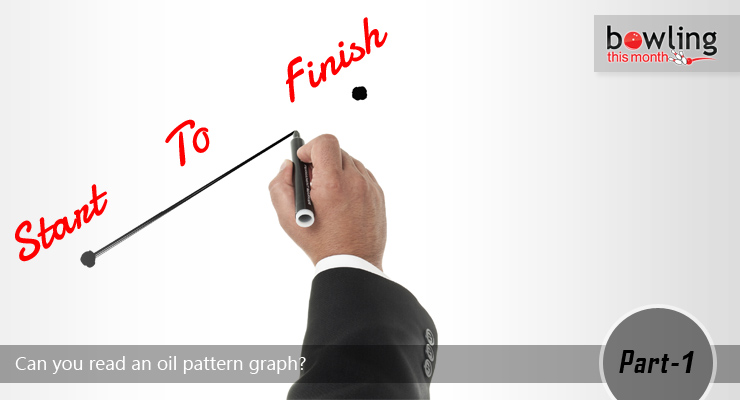The majority of time, at least here in the U.S., the lanes are stripped and oiled with a fresh oil pattern just before the start of league. Some of you may be thinking, “What is an oil pattern?” Some of you may already know. To make sure there is a clear understanding, the oil pattern will be explained fully.
Even though it may seem complicated at times, oil patterns are not as difficult to understand as you might think. First, you must learn how to read the graphs that will be used. Second, you must understand that oil patterns only display how oil is applied to the lane, which does not necessarily mean that is how the lane will play when competition begins. Remember last month’s article about lane surfaces? Now it is time to move on to a typical oil pattern, known as a “house condition”, or a “walled up oil pattern”. Let’s start off with what a fresh oil pattern; how to read it, and understand it.
Oil pattern graph – freshly oiled
Fresh Pattern
The oil graph shown here is a fresh oil pattern generated off of a lane reading software program. It is of a typical house condition that is used throughout the U.S. Oil patterns are determined by how and where the units of oil are applied to the lane. Surprisingly, there is no one exact measurement for a ...
This article is only available to Bowling This Month subscribers. Click below to get instant access to this article and all of our other premium instructional content.
Subscribe to Bowling This Month
Already a Bowling This Month subscriber? Click here to log in.
Image Credits: Hand / drawing a line graphic (©iStock.com/Catalin205) is licensed for use by BTM and is the copyrighted property of its original creator.
